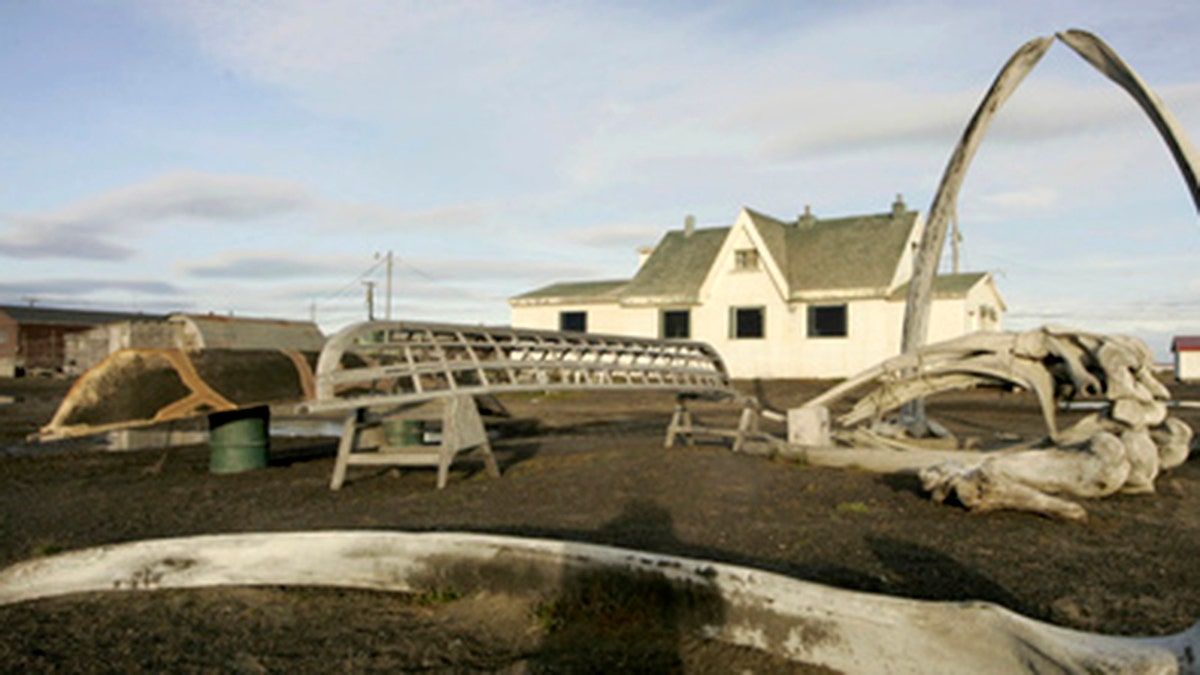Fox News Flash top headlines for November 19
Fox News Flash top headlines are here. Check out what's clicking on Foxnews.com.
The sun set for the last time this year in the remote Alaskan city of Utqiaġvik on Wednesday, marking the start of a 66-day period of “polar night.”
“At 1:30pm AKST this afternoon, the sun will set and Utqiaġvik will enter a 66 day period of polar night,” tweeted the National Weather Service Fairbanks. “The sun will rise again on January 23rd, 2021.”
“Goodnight Utqiaġvik!” tweeted the Bureau of Land Management Alaska.
ALASKAN CITY LOSES DAYLIGHT, DESCENDS INTO 65-DAY PERIOD OF 'CONSTANT DARKNESS'

In this Aug. 12, 2005, file photo, a skin boat display sits next to whale bones and an arch made of a whale jaw on the beach at Brower's Cafe in Barrow, Alaska. (AP Photo/Al Grillo, File)
“From the ‘It Could Be Worse’ Department ...” tweeted 7 News Boston Meteorologist Josh Wurster.
Located north of the Arctic Circle on the coast of the Chukchi Sea, Utqiaġvik, which was formerly known as Barrow, is the northernmost American city. The city has 4,429 residents, according to its website.
“Although Utqiagvik is a modern community, subsistence hunting, fishing, and whaling are still very important to the local economy,” it says. “Many residents who work full- or part-time continue to hunt and fish for much of their food.”
CLICK HERE TO GET THE FOX NEWS APP

In this Oct. 10, 2014, file photo, snow falls around a sign in Barrow, Alaska. Residents in Barrow, the nation's northernmost community, have voted to change the name of their city back to its traditional Inupiaq name of Utqiagvik. (AP Photo/Gregory Bull, File)
“Polar night is the opposite of midnight sun, when none of the Sun's disc is visible above the horizon at all,” explains TimeandDate.com. “It only happens within the polar circles.”
Fox News’ Jennifer Earl contributed to this article.




















